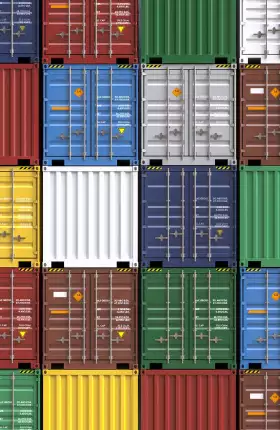Markets and managers seemed to breathe a sigh of relief with the July 27 announcement of an EU-US tariff framework agreement. If nothing else, the fact of a deal—and a headline tariff rate of 15% for EU imports into the US, with some sectors excluded entirely—preempted a potential trade war and established clarity in what had been a big sea of transatlantic uncertainty.
But did it?
As is often the case with high-level deals (as opposed to fully fleshed out agreements), there’s a lot of room for differing interpretations and even outright disagreement. We are seeing some of both play out this week as Washington and Brussels seek to clarify what is and, perhaps more important, what is not included. The EU-US framework is complex and in many respects uncertain. It adds to the patchwork complexity of the new global trade order that is taking shape.
Here’s an early look at what we know, what we don’t, and what it all could mean for affected companies.
What We Know
The EU and US have settled on a 15% tariff rate for EU imports into the US. This will be the highest rate in decades, but it’s a lot less than the 20% to 50% figures that have been bandied about in recent weeks and months. Several sectors and strategic products—among them aerospace, some chemicals, semiconductors, some agriculture and food products, and natural resources, including critical-resource minerals—are exempt and will remain at zero tariffs in both directions. US imports to the EU are not subject to tariff increases. The EU has withdrawn its threats of retaliation.
The new 15% applies to autos and auto parts, replacing the 27.5% now in effect under the US’s Section 232 National Security tariffs. As an example of how complex the global trade landscape is becoming, Detroit’s Big Three automakers have pointed out that with the new 15% tariffs, European and Japanese automakers may be tariffed at lower rates than US car manufacturers, which must pay higher duties on parts and steel. The 15% rates do not apply to US imports of EU steel and aluminum, which are still subject to 50% duties, pending agreement on a UK-style tariff rate quota (TRQ) arrangement.
The EU-US agreement also includes a signaled intent to “work together against global overcapacity,” which is perhaps a step toward establishing a bloc of like-minded partners working under a combination of low or no tariffs and TRQs. Such a bloc could impose higher tariffs against other global producers.
The EU’s digital regulations and member states’ digital taxes are not affected, at least for now.
The EU has made commitments to buy $750 billion ($250 billion a year for three years) of US energy products, although the feasibility of this level of purchases is open to question. The EU has also agreed to invest $600 billion directly in the US, but the timing, form, and enforcement of this provision are unclear.
One key aspect of this deal, just like the recent agreements with the UK and Japan, is that the framework does not come close to covering the “liberalization of substantially all trade” between the EU and the US that would qualify it as a World Trade Organization–recognized Free Trade Agreement. Thus, it could be seen to breach the nondiscrimination principle that is central to the WTO.
In the current environment, we can likely expect such deals to multiply, without giving much consideration to long-standing multilateral trade rules—adding further patchwork complexity.
What We Don’t Know
Although EU Commission president Ursula von der Leyen emphatically stated that tariffs would not “stack” and that “15% is a ceiling,” it is still not entirely clear whether the new tariffs are an absolute maximum or will accumulate on top of the current baseline “most favored nation” (MFN) rates, as other US “reciprocal” tariffs typically do. In the recently announced US-Japan agreement, the new 15% rates incorporate MFN tariffs and are therefore a ceiling. The EU briefing also implies that MFN rates are incorporated.
Some uncertainty remains about what happens to US tariff rates in excess of 15%, such as the 25% so-called chicken tax on light trucks including pickups. The European Commission has said that these higher tariff rates would remain in place but not be added to the 15%. However, this is not the case with US tariff deals with other countries, including the UK, where these rates are in addition to the reciprocal tariffs. In fact, even the term “automotive” is not defined in the EU-US agreement, although it is likely to cover the harmonized system (HS) codes listed in the section 232 action under the US Trade Expansion Act of 1962. The rate that will apply to other key products (such as branded and generic pharmaceuticals) is left unstated.
As in the US-UK deal, the scope, reach, and specifics of a quota system for steel and aluminum have not been defined. Likewise, the precise HS codes covered by the zero-for-zero provisions in the tariff-exempt industries cited above have not been identified.
The specifics of the energy purchase and investment commitments are not spelled out.
Implications for Business
Many executives can feel relieved that the worst potential impacts of an EU-US trade war have been averted. Tariffs are largely fixed (at least for now) at 15%, and EU retaliation is off the table. But tariffs on most EU-to-US exports will be significantly higher than they were in December 2024. Companies should revisit cost structures, sourcing strategies, and pricing to reflect the new baseline.
The deal is complex, much remains to be fully negotiated, and the impact on individual companies will depend on the details as well as on each company’s product HS codes, supply chain structure, and reliance on affected trade lanes. Targeted, company-level impact assessments are critical to inform response planning.
There is plenty of ongoing uncertainty in terms of the deal’s details and longevity. Companies need to continue to monitor and calculate impact, pursue policy shaping as the details are finalized, and plan for a variety of potential future scenarios. Those that have not set up tariff command centers to address trade compliance, supply chain, commercial considerations, pricing, scenarios, and policy should consider doing so as quickly as possible.
Even for companies that are not directly involved in EU-US trade, secondary effects could ensue from the broader impact of US tariffs that alter the competitiveness of their products. These potential effects need to be considered in planning scenarios.
If one thing is clear, it’s that a lot of specifics affecting EU-US trade are not settled.






